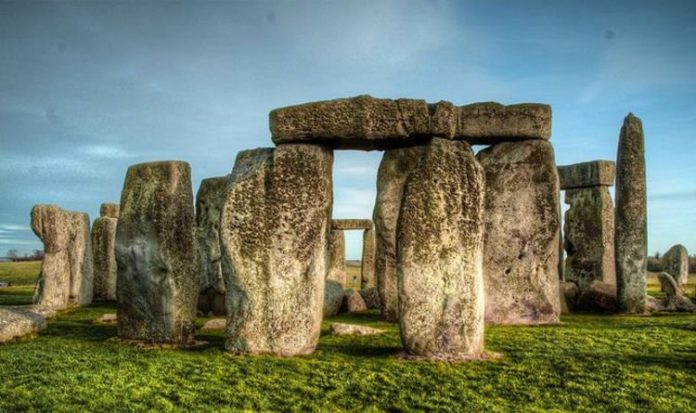Professor Mike Parker Pearson uncovered an ancient stone structure at Waun Mawn, in the Preseli Hills, during BBC Two’s ‘Stonehenge: The Lost Circle Revealed’ documentary earlier this month. Experts now theorise that the dismantled stone structure in Wales became the “building blocks” of the Stonehenge monument that stands in Salisbury, Wiltshire, today. Excavations and analysis of the area dated the stone circle to around 3400BC and found several similarities between both sites, leading Prof Parker Pearson to theorise people were moving eastward and bringing their cultural “crown jewels” with them.
But not all of the Stonehenge stones are linked to Waun Mawn, inspiring archaeologists to theorise monoliths from other stone circles could have been taken to create their new “monument to unification”.
And that appears to support a theory put forward by Professor Vincent Gaffney during History Hit’s ‘A New Discovery at Stonehenge’.
He said: “Why is the scale of these things so huge? My answer is that they probably grew from small things.
“The one thing that people don’t always consider when visiting Stonehenge is the Neolithic posts not that far away from where you are standing.
“Someone was marking out this area from a very early stage – once it had been marked out, it simply was repeatedly visited, it was embellished and it grew with time.
“It is, in some sense, self-building, because some of the things that look like structures to us – like the barrels around the envelope – they were not planned by the people who put up the trilithons.”
Prof Gaffney went on to point out that many of the sites close to Stonehenge are linked in some way.
He added: “They occurred because the trilithons are there, the site is already there and the development occurs because of earlier events.
“We see this time and time again, they’re all linked, everything is linked.
READ MORE: Stonehenge story ‘twist’ after 5,000-year-old charred remains of ‘Neolithic lunch’ found
“The great Cursus to the north is an enclosure 3km (1.86 miles) long, running east-west and 100 metres wide – that has a series of pits that seem to be linked to the solsticial arrangement from Stonehenge.
“These massive monuments that give the impression of planning are linked as a consequence of the development of landscapes over millennia.”
And the expert believed that could be similar across the country.
He continued in 2020: “We are processing the huge amount of geophysical data that we’ve got.
“It is an enormous amount of data. and we should expect to find different relationships and features emerge from that.
“We will find different features but we should not underestimate the complexity of these monuments and the societies that built them and the scale at which they were prepared to invest their energies in terms of construction.
“Stonehenge will remain unique, but in many other areas there are vast monument complexes across the country – Northumbria for instance, Dunragit in Scotland – these remain to have surveys and studies at the scale carried out at Stonehenge.
“It’s not just watch this space, watch all these spaces.”
It comes after a new theory placed the monument’s “true purpose” as defence.
Retired scientist and academic Colin Berry told Express.co.uk that the stone structures were initially built to protect the “VIPs” in the community, before serving as a defence for livestock.
He said: “Might there be a more pressing need to do with the bottom line of Neolithic existence, namely competition between two conflicting lifestyles? I say yes.
“First, choose and extract bluestones of intermediate size, albeit barely portable, since they need to be fairly massive.
“They were intended to be taken on the journey by monolith porters who would assemble stone-by-stone into protective ‘blockhouses’ at each overnight stop. Why? To protect one, or at most a handful of VIPs against onslaughts of enemy arrows.
“Two or three months later, the migratory travellers reached their destination on Salisbury Plain. The immediate purpose of the bluestones had been served.
“If they had successfully fulfilled a protective role en route, might they not be useful in that same capacity at their destination?”







